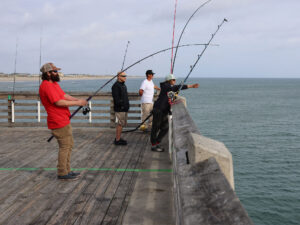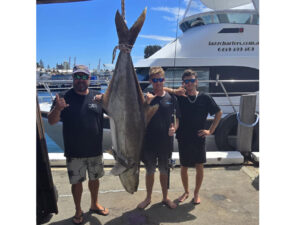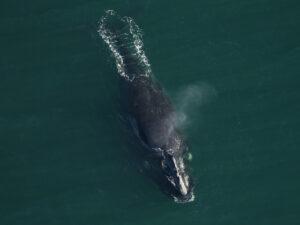Menhaden or ‘pogie’ purse seine boats continued to pound Louisiana’s beaches and shorelines this summer and Louisiana is still the “Wild West for the menhaden industry,” says David Cresson, Executive Director of CCA Louisiana.
“All summer long, massive pogie ships have been seen harvesting in the shallow waters off Louisiana’s beaches and shorelines,” says Cresson. “Sometimes, the boats have been spotted making sets, using their giant purse seines, inside the shallow bays and inlets off of Plaquemines and St. Bernard Parishes, churning up bottom sediment and netting millions of pounds of critical forage and bycatch. Not surprisingly, there are countless reports of dead redfish and other species left behind.
“The only possible conclusion is that the (pogie) industry just doesn’t care.”
Commercial menhaden netters remove nearly 1 billion pounds of menhaden and tens of millions of pounds of bycatch from Louisiana’s shorelines annually, says Cresson, operating at times within just a few hundred yards of the coastline.
Cresson notes that Louisiana’s Fisheries Commission established a 1/4-mile buffer around the state coastline to prevent damage from seiners.
“The industry promised, in formal testimony, to adhere strictly to the buffers established coastwide,” Cresson continues. “But even though the buffer is grossly inadequate the menhaden industry refuses to abide by it.
“I spoke recently to a charter captain from Plaquemines Parish who told me he’s never seen (seine) boats as close to shore as they have been this year. They’re setting in places where the water is 5-to-6 feet deep. Nothing can survive what happens when these boats set their nets. All that’s left when they leave is muddy water and dead fish.”
Cresson has reports from guides who have seen menhaden boats over shallow man-made reefs they believed were damaged by the draft of large commercial ships. The reefs are home to a wide variety of species, including seatrout and redfish, and are popular spots for recreational angling.
CCA has aerial drone footage showing damage done to the sea floor by enormous menhaden boats as they corral schools of baitfish into their purse seines.
“This is a common occurrence in Louisiana’s territorial waters,” he says.
According to Cresson, Mississippi enacted a one-mile buffer across their entire coast where pogie harvest is restricted. Advocates in Virginia are working to remove menhaden boats from state waters, where they have caused enormous damage to local fisheries, says Cresson.
“Meanwhile, despite overwhelming support from the public, the Louisiana House of Representatives and the Senate, political roadblocks have stalled meaningful pieces of legislation aimed at reasonable (menhaden netting) regulation in Louisiana waters,” Cresson said.
He cited a report from Virginia revealing “Omega (commercial fisheries) admitted to killing and releasing roughly 12,000 pounds of redfish in a single netful a few weeks ago”, leading to a dead fish spill that closed a state park. “One wonders how (or if) the incident in Virginia would have been reported had it not occurred near a state park and caused the closure of a crowded beach.
“The most recent data shows that more than 70 percent of the entire Gulf of Mexico menhaden harvest occurs within three miles of the Louisiana coast. (up from 54% in 1998.),” Cresson said. “As much as 300-to-400 million pounds comes from Breton and Chandeleur Sounds. Historical bycatch studies performed by on-boat ‘observers’ admit they have trouble estimating what is being harvested and don’t count any dead fish left in the water.
“Are we to believe that concentrating effort close to shore, with known limitations of bycatch observations, that there is no reason to investigate the trend of increased pressure within Louisiana territorial waters?
“The real issue is our lack of understanding of how taking about a billion pounds of forage from Louisiana’s waters impacts other fish and wildlife species, and how this style of harvest might impact our fragile habitats.”








